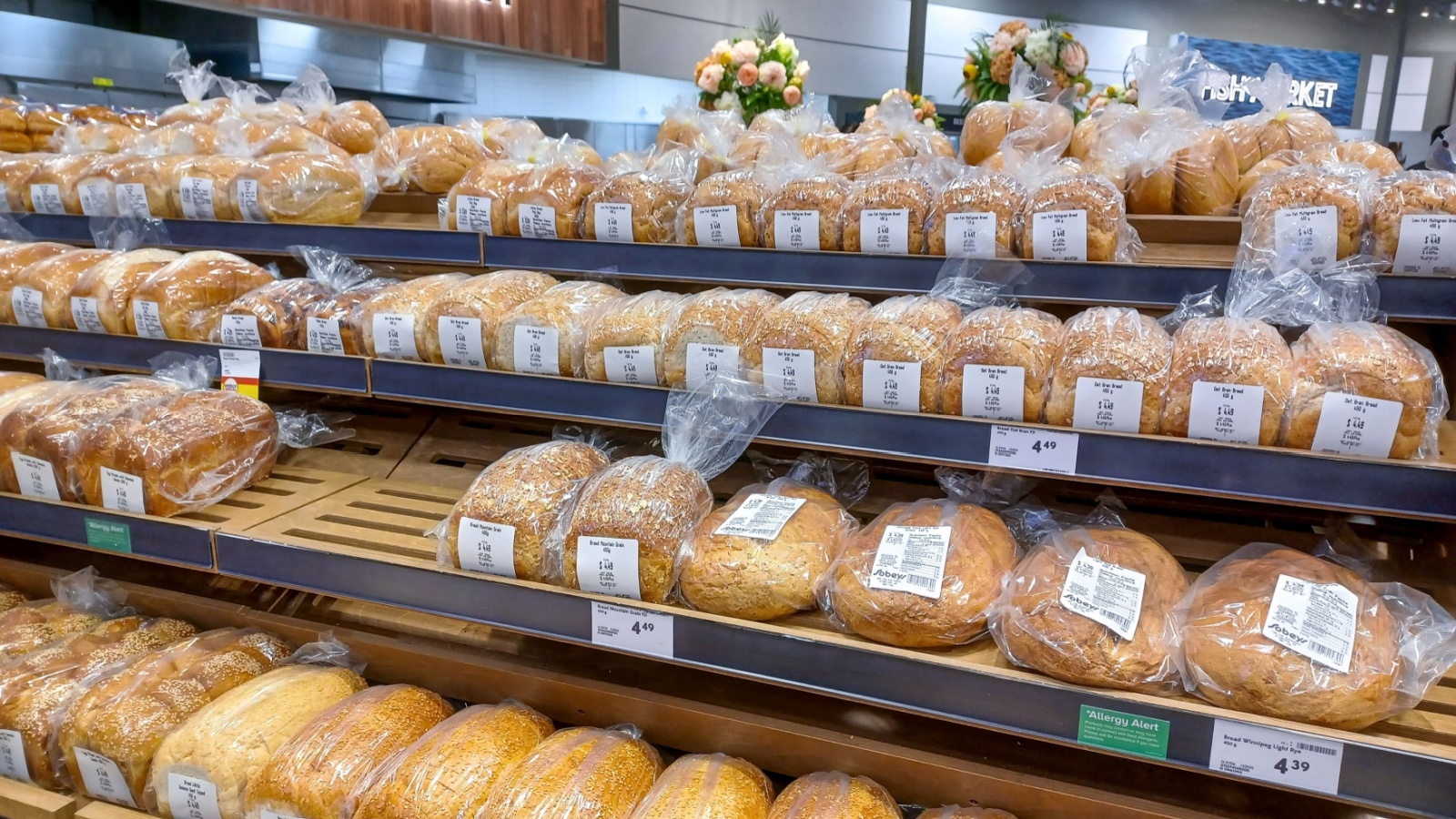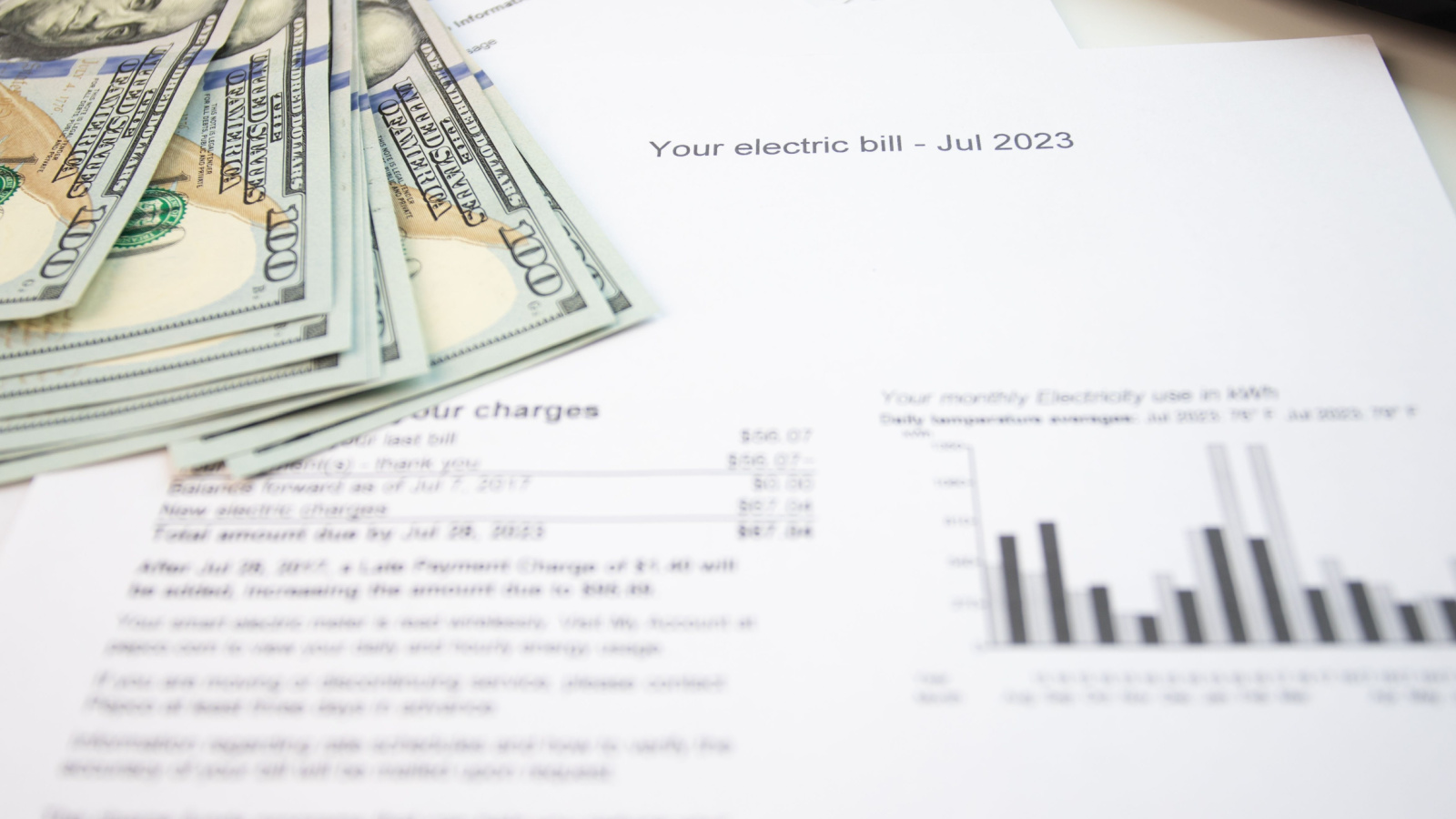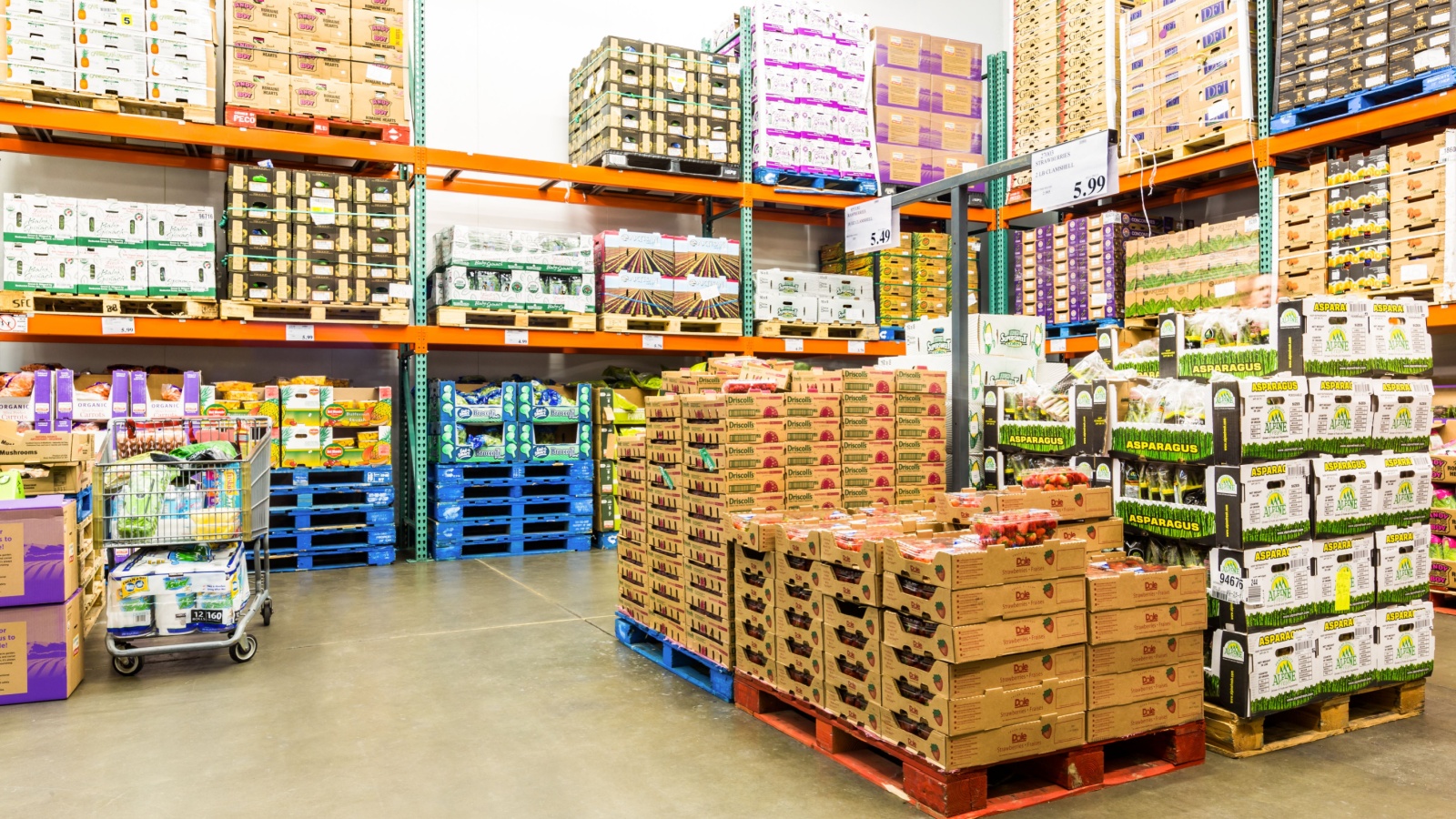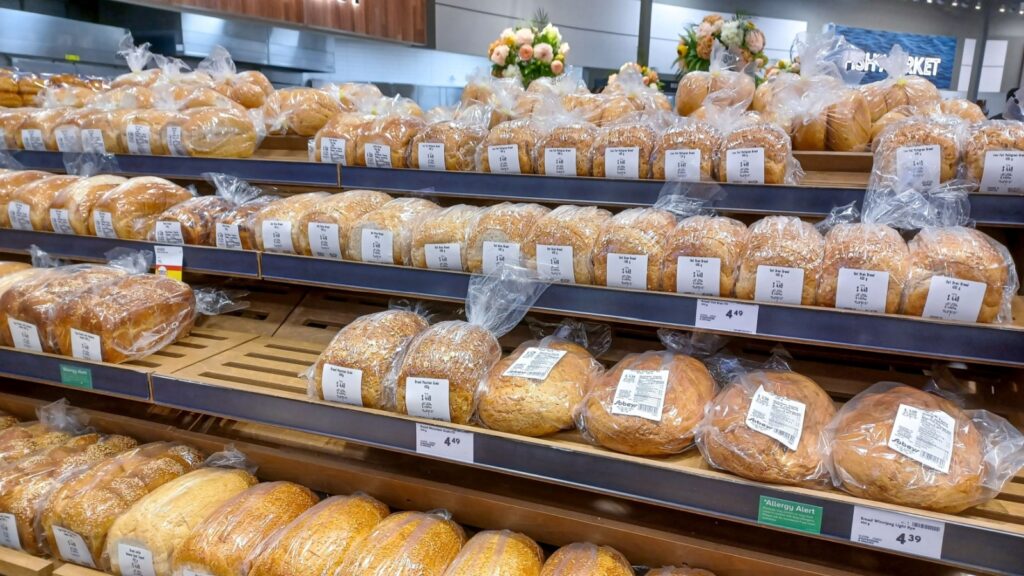Over the last decade, Canadians have watched everyday items quietly rise in cost until many have effectively doubled in price. It’s not just luxury goods, it’s the basics: groceries, utilities, and services that used to fit easily into the average household budget. From bread to broadband, nearly every essential has become noticeably heavier on the wallet. Here are 17 Canadian products that have quietly doubled in price.
Pre-Packaged Bread

Packaged bread prices have soared far beyond typical inflation. A combination of global wheat price spikes, fuel costs, and the infamous bread price-fixing scandal among major grocers pushed costs up dramatically. According to market data, the average loaf that cost $2.25 a decade ago can now reach nearly $4.50. The bakery sector also faced higher wages and packaging costs, keeping prices inflated even after global supply chains stabilized. This rise hurts lower-income families most, as bread remains a daily necessity, not a luxury. The once-cheap staple has quietly become an expensive grocery item in many Canadian homes.
Bottled Water (Large Formats)

Bulk bottled water has seen a surprising jump in price, particularly among brand-name and “purified mineral” lines. While Canadians might assume water would remain cheap, packaging, transportation, and plastic-recycling costs have driven retail prices nearly double in some regions. Environmental regulations requiring higher-grade plastics and distribution costs tied to fuel have worsened the trend. A 24-pack that costs $3.99 now often sells for $7.49 or more. Ironically, while tap water remains one of the safest globally, consumer preference for bottled convenience has made hydration a pricier daily habit.
Electricity Bills

Electricity costs have climbed significantly across multiple provinces, with consumers paying not just for energy, but for transmission fees, carbon levies, and infrastructure upgrades. Ontario residents, for instance, saw average bills rise from about $100 to $200 per month over the past decade. Aging grids, renewable energy investments, and administrative markups have all contributed. These increases hit fixed-income households particularly hard, since utilities are unavoidable expenses. Even small apartments now face power bills that resemble mortgage payments from a generation ago.
Auto Insurance Premiums

Car insurance rates in Canada have nearly doubled in certain regions, particularly in Ontario, Alberta, and B.C. Repair costs for modern vehicles, loaded with sensors and technology, have risen steeply. Meanwhile, urban congestion, more accidents, and weather-related claims continue to pressure insurers. Ten years ago, a typical policy might have been $900 annually; now it’s common to see premiums above $1,800. Even drivers with clean records haven’t escaped the surge. With transportation essential for work, this unavoidable cost has quietly eroded disposable income for millions of Canadians.
Summer Camps and Youth Programs

Sending kids to summer camp used to be a modest seasonal expense. Now, it’s a major financial decision. Labor shortages, rising food costs, insurance coverage, and facility fees have pushed prices to nearly double what they were a decade ago. A one-week camp that cost $250 can now exceed $500 in many provinces. Non-profits have struggled to stay affordable as wages and safety standards have increased. For parents, especially those with multiple children, the summer fun budget now rivals vacation costs, leaving many families forced to scale back on enrichment activities.
Home Internet Plans

High-speed home internet, once an optional luxury, is now essential and expensive. Over the past decade, average monthly bills have climbed from around $50 to nearly $100. While speeds have improved, many consumers argue that pricing far outpaces service gains. Carriers justify increases by citing network expansions, spectrum costs, and rural access investments. Yet affordability remains an issue, with many Canadians paying among the highest broadband prices in the OECD. As digital life becomes mandatory for work, school, and entertainment, connectivity now consumes a significant chunk of household budgets.
Transit Passes

Monthly transit passes in major cities have steadily climbed in price. In Toronto, a regular pass cost $128 in 2015 and now exceeds $157, while similar jumps are seen in Vancouver and Montreal. These hikes cover increased maintenance, energy costs, and unionized wages. For daily commuters, these rises mean several hundred dollars more annually just to get to work. Unlike gas prices, which fluctuate, transit fees rarely drop. For low-income earners and students, even discounted passes have become financially burdensome, reducing accessibility to employment and education opportunities.
Dental Cleaning and Checkups

Routine dental visits have nearly doubled in cost in the last 10–15 years. The average cleaning and exam, once $120, can now easily reach $240 or more. Equipment upgrades, infection-control standards, and higher hygienist wages all contribute. Since dental care is often not covered by public insurance, these increases hit directly out of pocket. Many Canadians now delay visits or skip cleanings altogether. Dentists note a rise in patients waiting longer between appointments, risking bigger oral health issues later. What used to be preventive care now feels like a luxury service.
Apartment Rentals

Rents for one-bedroom apartments in secondary cities have doubled since 2013. Areas like Halifax, Kelowna, and London now mirror the prices of Toronto suburbs. A one-bedroom that once cost $900 per month now averages $1,800 or more. Supply shortages, high immigration rates, construction delays, and interest-rate-driven investment shifts all contribute. With limited rent control outside major hubs, tenants face steep annual increases. As wages lag behind, rental affordability is collapsing, forcing many Canadians to downsize, find roommates, or leave urban centres entirely.
Gym Memberships

Fitness membership costs have nearly doubled since pre-pandemic times. Clubs justify the rise with increased operating costs, staff wages, and expanded wellness services. Pre-COVID, a typical membership was around $45 per month; now, full-service gyms often charge $90–$100. Added fees for classes, personal training, and amenities inflate costs further. Many smaller gyms closed during lockdowns, leaving survivors with pricing power. Staying healthy is more expensive than ever, making home workouts or smaller studios an increasingly appealing alternative for budget-conscious Canadians.
Butter

Butter prices have risen sharply due to supply management, rising dairy feed costs, and international shipping constraints. In 2013, a 454-gram block cost around $3.50; now it regularly sells for $7 or more. Dairy farmers have faced increased costs in feed and energy, while production quotas and transportation bottlenecks keep supply tight. For families who bake or cook frequently, butter inflation has significantly raised grocery bills. It’s one of the most visible examples of essential-item price escalation that consumers can’t easily substitute or avoid.
Natural Gas Heating

Home heating bills tied to natural gas have nearly doubled over the past decade, especially during colder winters. Rising global gas prices, infrastructure charges, and carbon levies have pushed average seasonal bills from about $600 to over $1,200 in some provinces. Even with consumption controls, costs remain high due to delivery fees and unpredictable market volatility. For households in prairie provinces, heating has shifted from a background utility to a major financial line item, particularly for older homes lacking energy efficiency upgrades.
Warehouse Membership Fees

Warehouse club memberships, like Costco’s, have quietly climbed from $55 a year to around $120 for executive tiers. While perks have increased, the base membership’s doubling has gone largely unnoticed. These fees, coupled with higher product prices inside, erode some of the savings shoppers once enjoyed. Families that rely on bulk shopping for affordability are finding diminishing returns. The cost of simply accessing “discount” goods has become part of Canada’s broader affordability crisis, especially when compared with pre-inflation membership rates.
Cellphone Plans

Standard wireless plans in Canada are among the world’s priciest, and they’ve only climbed higher. A plan that once offered 4 GB for $45 now often costs $80–$90 for similar service. Spectrum auctions, infrastructure expansion, and limited competition keep prices inflated. Even budget carriers have raised rates to cover 5G rollout expenses. While speed and coverage improved, affordability worsened. Canadians now routinely pay double what users in comparable economies pay, turning mobile data into a premium utility rather than a basic necessity.
Shredded Cheese

Pre-shredded cheese has quietly become a grocery luxury. Once priced at around $5.99 for a 500-gram bag, it now exceeds $11 in many supermarkets. Processing, packaging, and dairy inflation all play a role. Convenience costs more, and consumers are paying for it. Rising energy prices and cold-storage fees also push the final shelf cost upward. Many households are switching back to block cheese to save money, though that adds prep time. The convenience tax on shredded cheese symbolizes how inflation hides in small everyday choices.
Children’s Eyeglass Frames

A pair of basic children’s eyeglasses that cost $80 ten years ago now easily tops $160. Rising manufacturing costs, currency fluctuations, and brand markups have inflated retail prices. Parents also face upselling for scratch-resistant coatings or fashionable designs. Optical shops cite supplier increases and tighter safety standards for materials. Since children often outgrow frames within a year or two, this doubling hits families repeatedly. For lower-income households, vision care has turned into a recurring financial challenge rather than a routine health expense.
Home Cleaning Services

Household cleaning service rates have nearly doubled since 2015. Labor shortages, higher minimum wages, transportation costs, and insurance premiums drive the surge. What was once $25 per hour now frequently exceeds $45–$50, especially in urban areas. With more households outsourcing chores due to busy lifestyles, demand remains strong despite rising costs. Service providers face higher operating expenses and liability requirements, which are passed directly to clients. For many dual-income families, regular cleaning has transitioned from affordable help to an occasional luxury.
21 Products Canadians Should Stockpile Before Tariffs Hit

If trade tensions escalate between Canada and the U.S., everyday essentials can suddenly disappear or skyrocket in price. Products like pantry basics and tech must-haves that depend on are deeply tied to cross-border supply chains and are likely to face various kinds of disruptions
21 Products Canadians Should Stockpile Before Tariffs Hit
